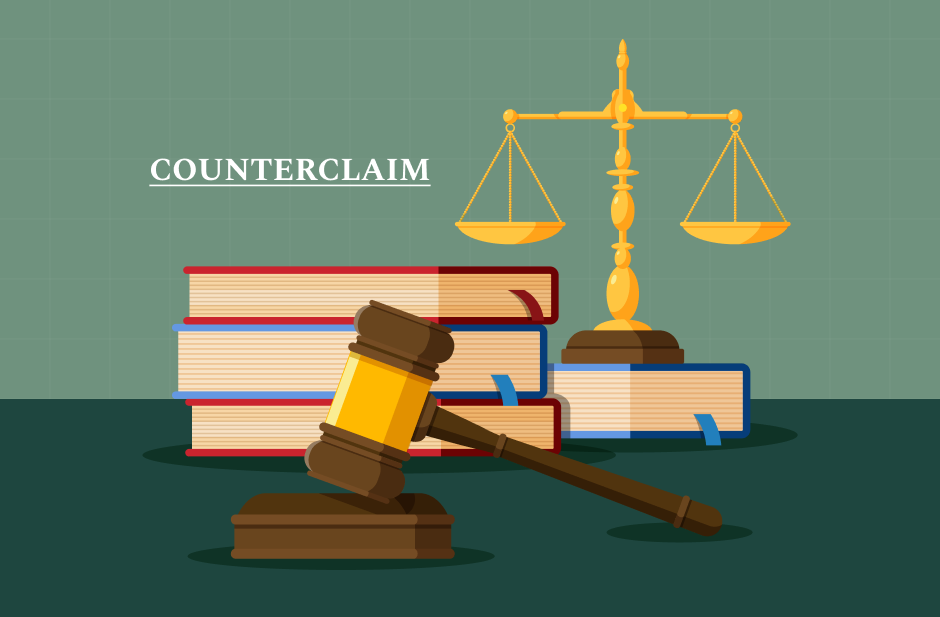Handling a lawsuit can be intimidating. Everybody believes they must simply defend themselves. However, in civil court, the defendant possesses a formidable offense weapon within their disposal- the counter claim.
A counterclaim is merely a secondary lawsuit filed by the defendant against the plaintiff within the current case. This legal tactic turns things around immediately, turning the defendant into a counter-plaintiff.
An understanding of the proper application of a counter claim is very important. It avoids duplicitous suits and promotes judicial economy since all the related disputes are resolved at once.
The following guide will fully explain what is a counter claim, its categories, and the essential steps to successful drafting.
What Is A Counter Claim?
A counter claim is a request for relief by a defending party against a party who is opposing him or her. In most cases, this is the defendant suing the plaintiff back.
The definition of counter claim describes that it is not just a defense, but a separate cause of action and can be sustained on its own as its own suit.
The True Counter Claim Meaning
When we discuss the counter claim definition, we emphasize that it is a cross-action. If the original suit of the plaintiff were to be dismissed, the counter claim would in itself exist.
This distinguishes it from a denial, which is merely aimed at defeating the claim of the plaintiff. A successful counter claim will allow money or other relief to be granted to the defendant by the original plaintiff. This is an excellent device you should be able to use.
The Two Basic Types Of Counter Claim

In the United States federal system, and in the vast majority of state courts modeled after the federal system, counter claims are compulsory or permissive.
Knowledge of the distinction between them is essential to procedural strategy.
Compulsory Counterclaim
A compulsory counterclaim arises from the same “transaction or occurrence” upon which the claim of the opposing party is founded. If the defendant does possess such a counter claim, they are required to bring it in the current action.
If they fail to bring the counterclaim within the ongoing suit, they irrevocably waive the right to make that specific claim against the plaintiff later as per FRCP Rule 13(a).
This is the rule that forces parties to settle all related issues simultaneously.
Permissive Counterclaim
A permissive counterclaim is any counter claim the defendant may have against the plaintiff which does not arise out of the same transaction or occurrence on which the original action was founded.
The defendant may assert the counter claim in the action here, but is not required to do so. If he does not, he may nevertheless prosecute a separate action thereon in the future. But asserting the counter claim now will tend to save time and effort.
How To File A Counter Claim?

Filing a counter claim is a matter of following very close the rules of the court. To find out how to file a counter claim, follow these steps carefully.
1. Timing Is Everything
You usually put the counter claim within the defendant’s responsive pleading, typically the Answer to the original Complaint. “You must file it within the time the court allows (typically 21 to 30 days after complaint service). Waiting may compromise your right to make a counter claim.
2. How To Write The Pleading
You must write the counter claim pleading in the form of a standalone complaint. This means including all the normal items:
- Statement of Jurisdiction (why the court has jurisdiction over the claim).
- Statement of Facts (the narrative of what transpired).
- Causes of Action (the law upon which the counter claim is based, e.g., breach of contract, negligence).
- Demand for Relief (what you want the judge to award you).
You need to sign the document formally, making the assertion “by way of counter claim.”
3. Serving The Plaintiff
Even though the plaintiff is already involved in the lawsuit, you must serve them formally with the Answer containing the counter claim. This process helps to notify them formally of the new suit filed against them.
4. The Plaintiff’s Response
When served, the plaintiff (now counter-defendant) must file a responsive pleading, commonly known as a Reply to the Counter Claim.
When the plaintiff fails to respond, the defendant (now counter-plaintiff) may arguably file for default judgment on the counter claim.
Counter Claim Vs. Set-Off And Crossclaim
People get confused with a counter claim with other filings. It is necessary to know these differences so that proper procedural practice is adopted.
Counter Claim Vs. Set-Off
The most significant difference between a set-off and a counter claim lies in their intent. A set-off is a formal defense used to reduce the amount that the defendant owes to the plaintiff. The amount of set-off usually needs to be liquidated (a certain, easily quantifiable sum).
A counter claim is an offensive move that attempts to recover something positive against the plaintiff.
The sum recovered can more than likely be more than the original amount claimed by the plaintiff. Thus, the connotation of the counter claim is much larger than the term set-off.
Counter Claim And Crossclaim
A crossclaim is a claim made by a party against a co-party. An example of a claim by Defendant A against Defendant B in the same suit is a crossclaim.
A counter claim, however, is always namely against an adversarial party, i.e., the defendant against the plaintiff.
Read Also: What Is Condemnation? Understanding The Legal Process Of Property Seizure
Strategy And Common Fallacies Of The Counter Claim
Strategic use of a counter claim has a potentially critical bearing on the outcome of the case. It has the potential to shift the focus of the case, increase settlement pressure, and dispose of ancillary matters efficiently. Filing of the counter claim requires planning.
Strategic Considerations For Filing- Jurisdiction
Ensure the court has jurisdiction over the counter claim. Compulsory claims generally fall under the court’s “supplemental jurisdiction,” but permissive counter claims might require independent jurisdictional foundations.
Litigation Leverage
A solid counter claim forces the plaintiff to spend resources to defend their own liability, which frequently creates improved settlement offers for the defendant. Such strategic leverage is the reason attorneys always evaluate every case for a good counter claim.
Waiver Prevention
Always consider whether the claim is obligatory. If it is, you must invoke the counter claim immediately in order to prevent waiver. You can’t sue afterward in an independent way.
Evasion Of Common Pitfalls
Now let’s find out the common pitfalls and how to stay out of it.
1. Missing The Deadline
The most common mistake is filing too late. Always attempt to file it together with the original Answer.
2. Improper Service
Failing to serve the plaintiff properly with the counter claim can invalidate the filing.
3. Limitation Period
Don’t forget that the counter claim is tantamount to a suit in and of itself. You have to ensure the statute of limitations for the underlying cause of action has not expired.
The date of the complaint of the plaintiff typically gives the pertinent date for most related counter claims.
Read Also: How To Understand The Consequential Damages Clause In Your Contract?
Recent Judicial Trends Regarding The Counter Claim
Courts increasingly value judicial efficiency today. That trend aids the worth of the rule of compulsory counterclaim, particularly in complex commercial litigation. Judges actively look for bases on which to consolidate related claims.
Current court rulings in complex contract cases often reaffirm the following.
- If a counter claim shares the same basic contract or facts as the plaintiff’s action,
- It must be brought promptly or
- Be waived.
This shows the seriousness of not making a counter claim. This means that each defendant must read the complaint closely and assess if there exists a corresponding counter claim. You are no longer in need of knowing what does counter claim mean. Also, you must learn when to use it.
Frequently Asked Questions (FAQs):
The counter claim is part of modern civil procedure where defendants are able to actively defend their interests and have all matters relating to them settled in one complete legal proceeding.
Always consult with legal experts right at the beginning of the process to find out if you have a viable counter claim to proceed with.
Ans. The court computes the net liability.
If the plaintiff is awarded $50,000$ and you are awarded $30,000$ on your counter claim, you would pay the plaintiff the difference of $20,000$. The court simply nets out the awards.
Ans. While you must accompany the filing of the Answer with a compulsory counterclaim, the court can permit you to make a late counter claim by grant of leave. You will be required to provide a good reason for late filing.
The court has wide discretion to grant these late filings, especially for a permissive counter claim.
Ans. A compulsory counterclaim will be in virtually every instance within the supplemental jurisdiction of the court, i.e., it won’t have its own independent basis for jurisdiction.
There may be an exception in a permissive counterclaim, which can have an independent basis for federal jurisdiction (e.g., diversity of citizenship or a federal question). Research this prior to filing the counter claim.

















